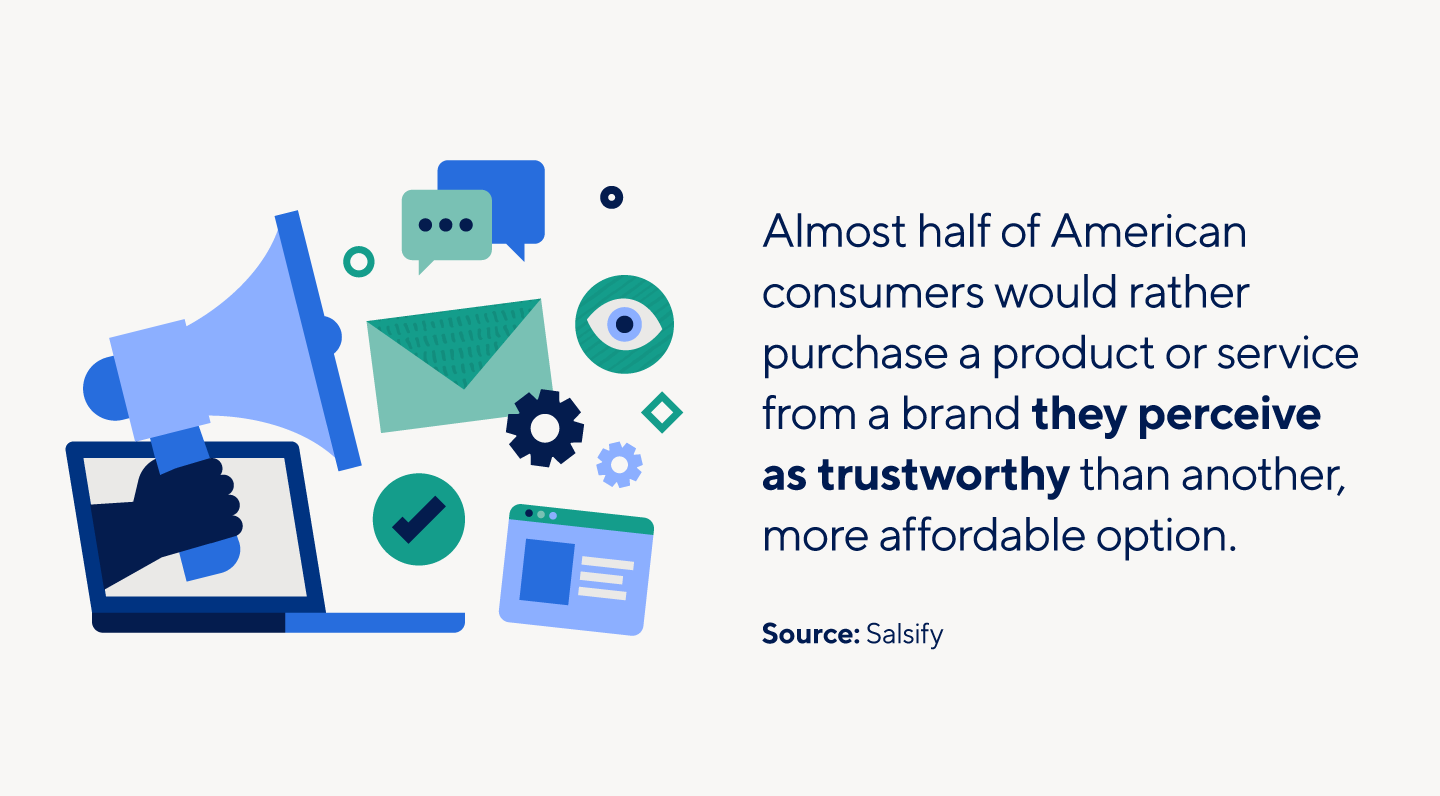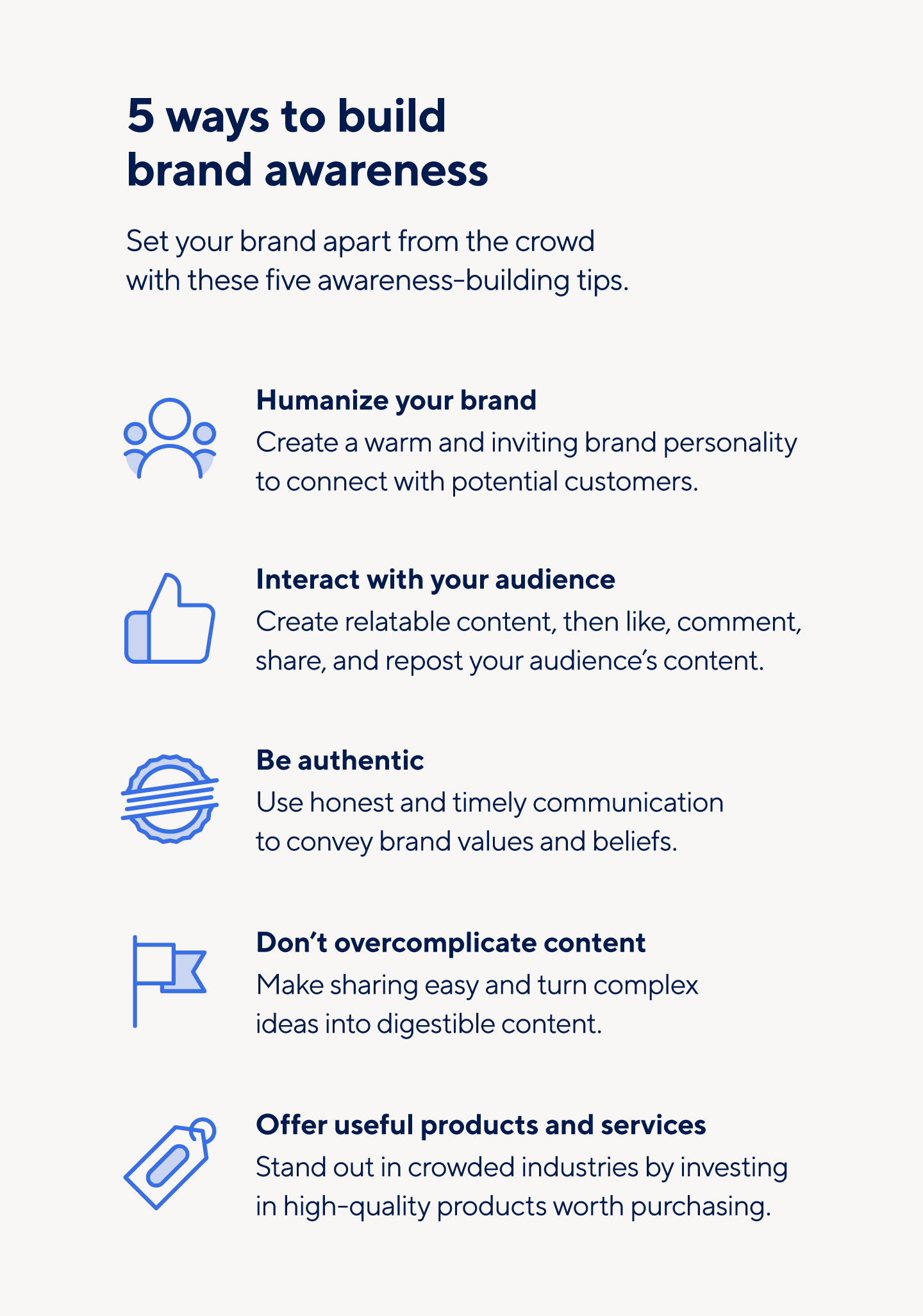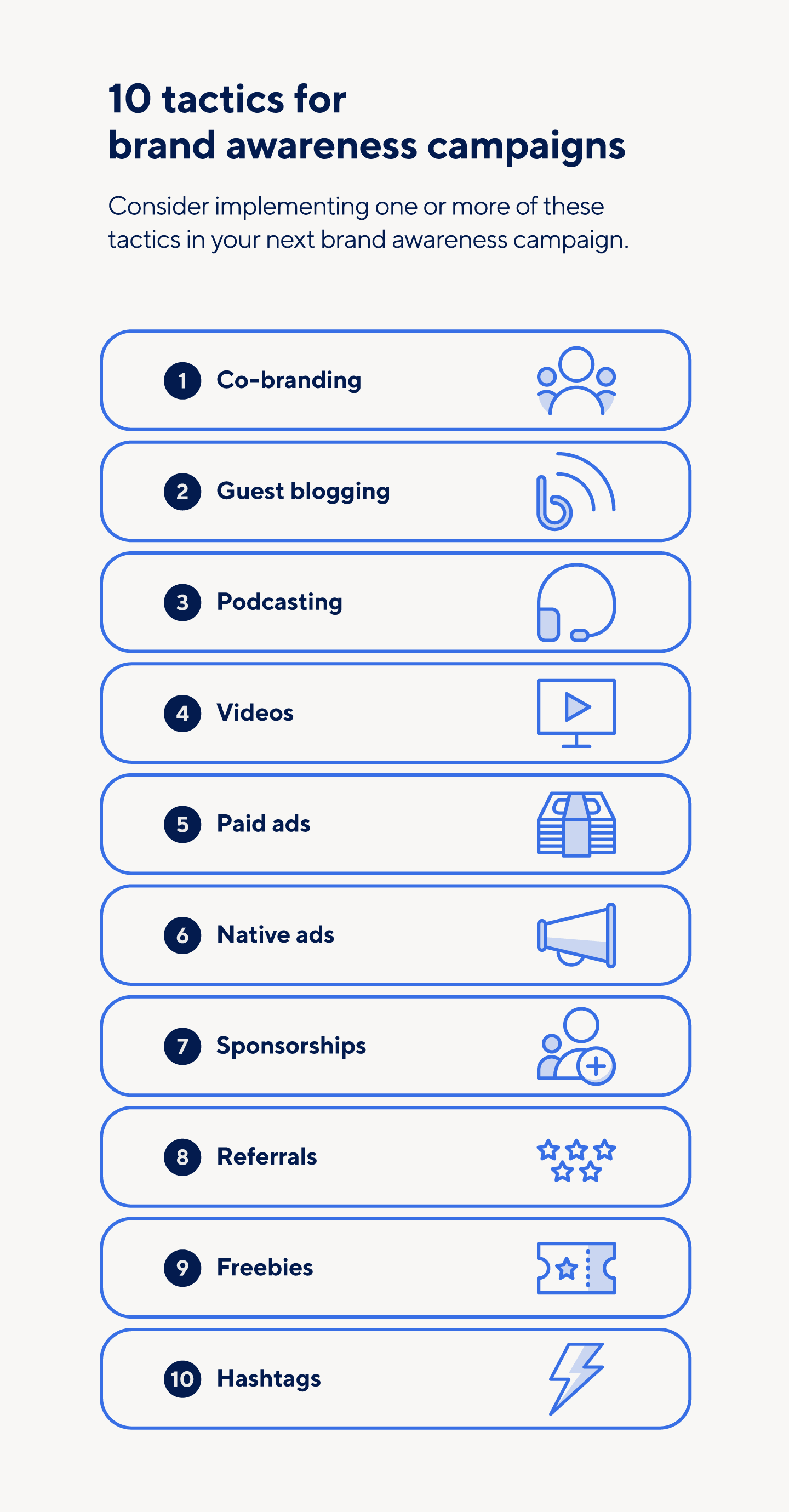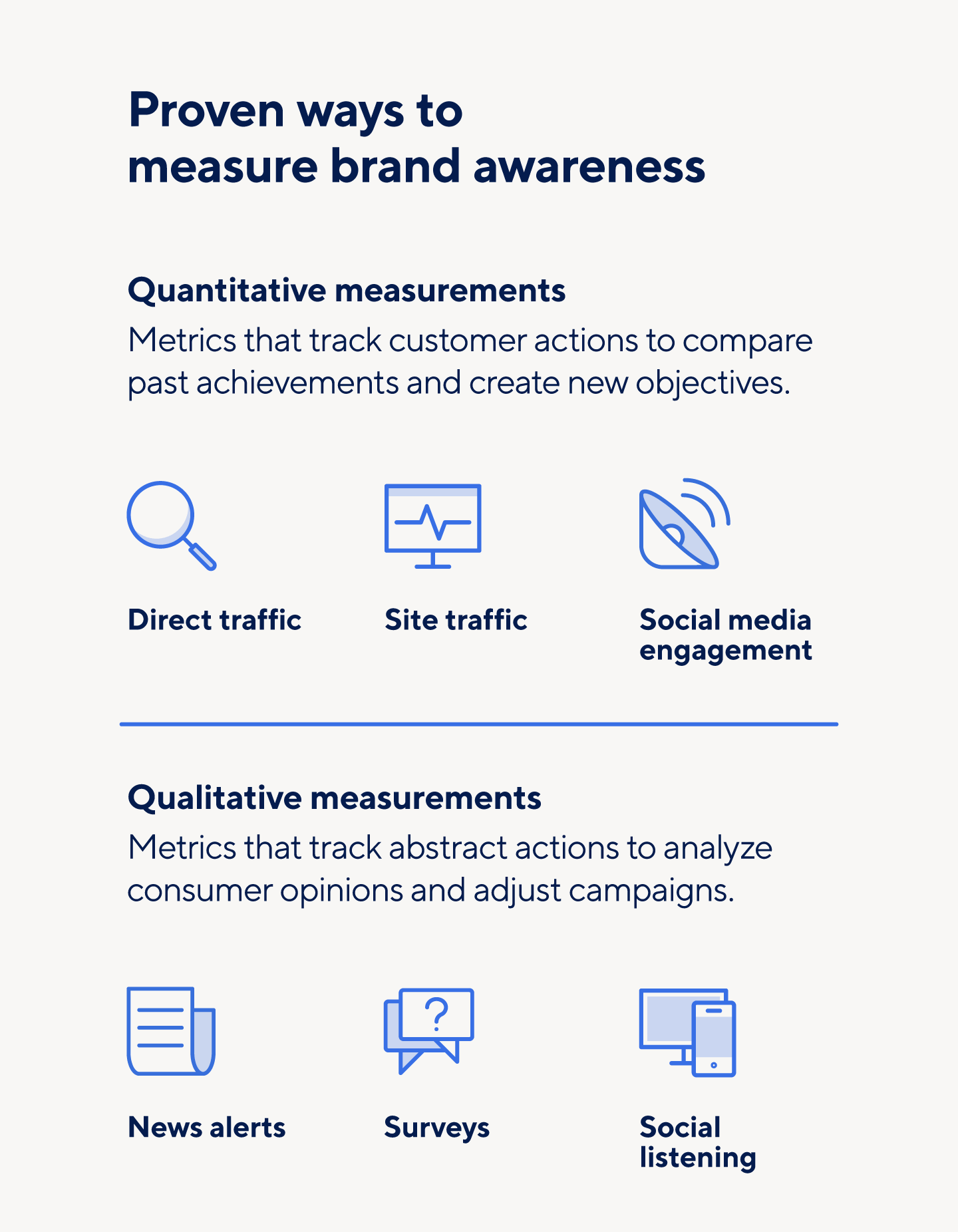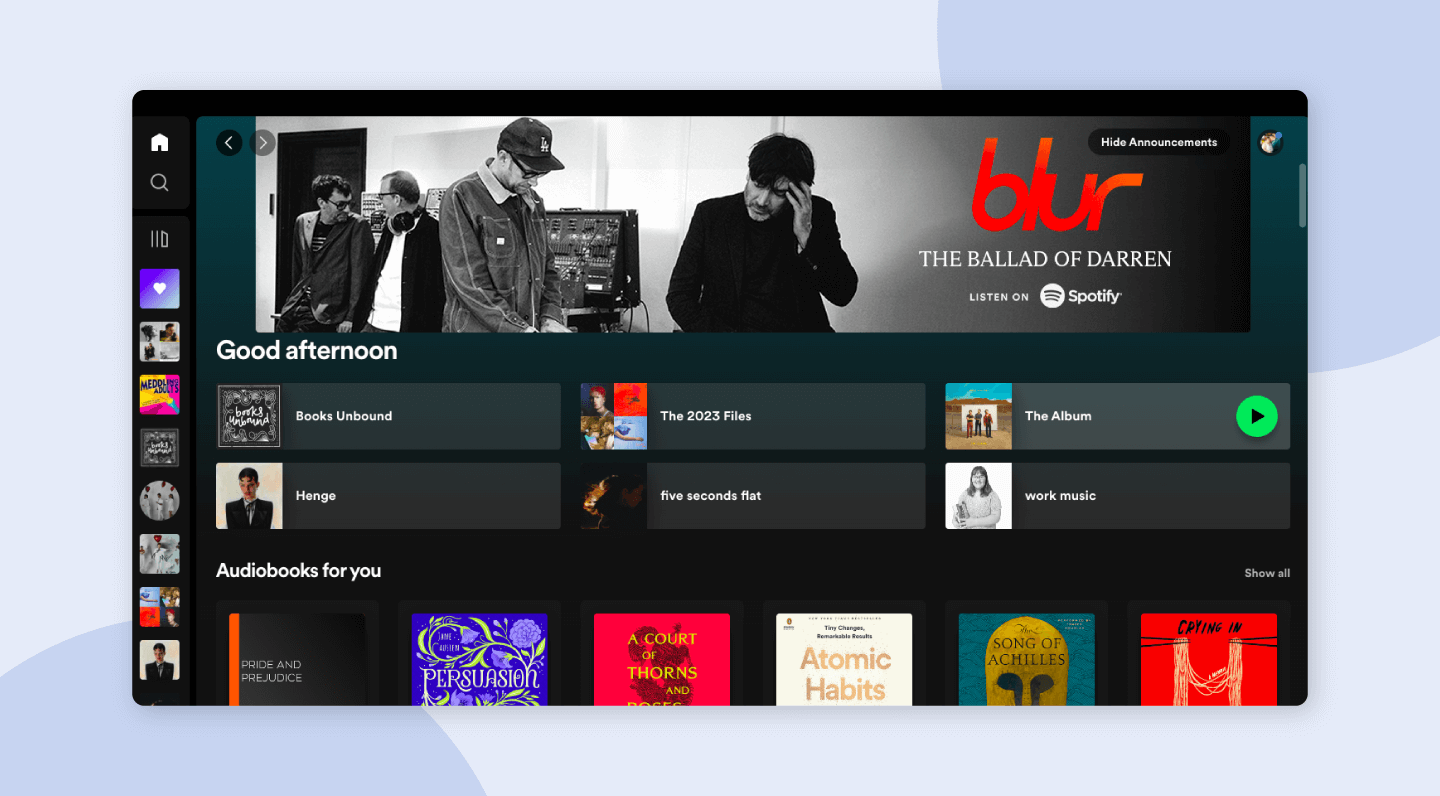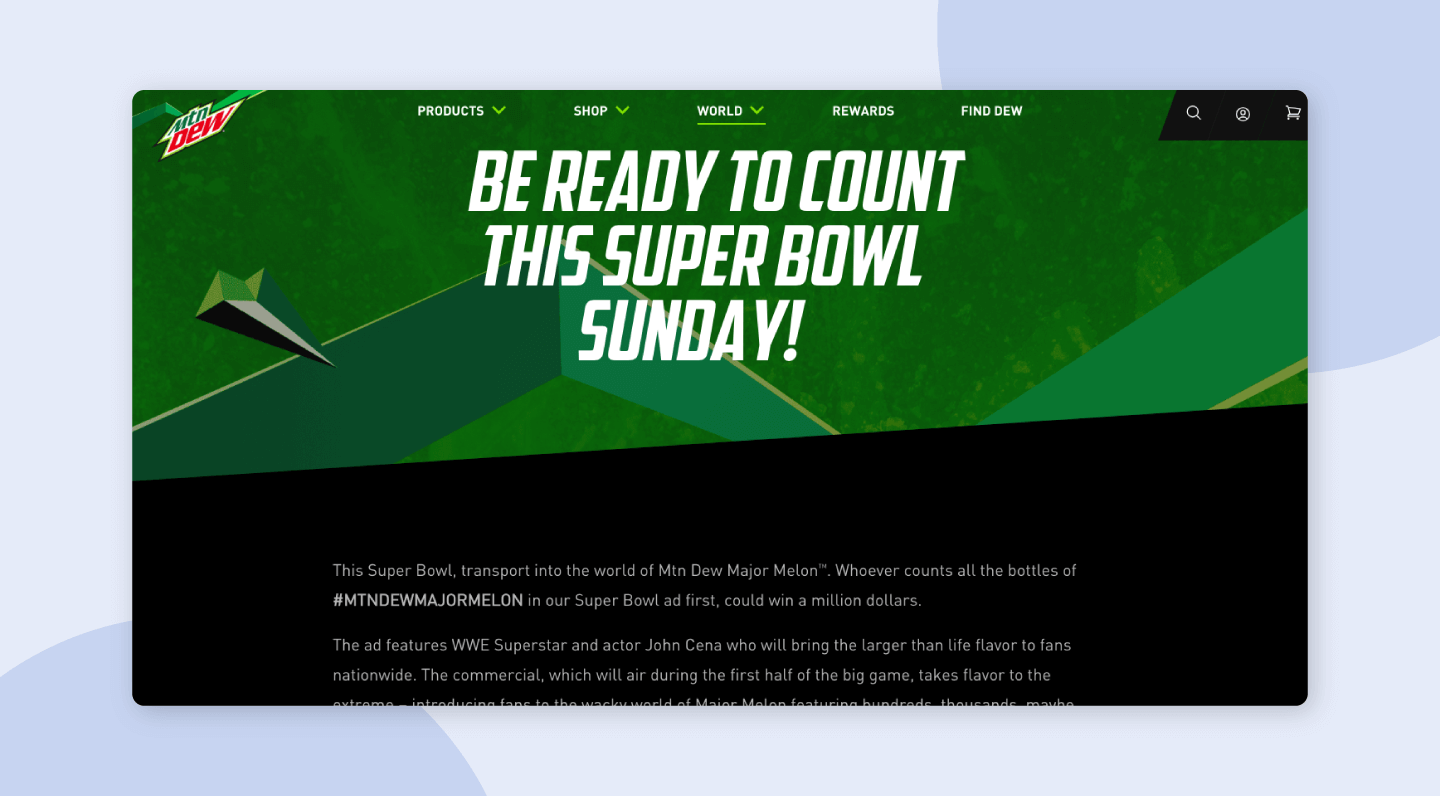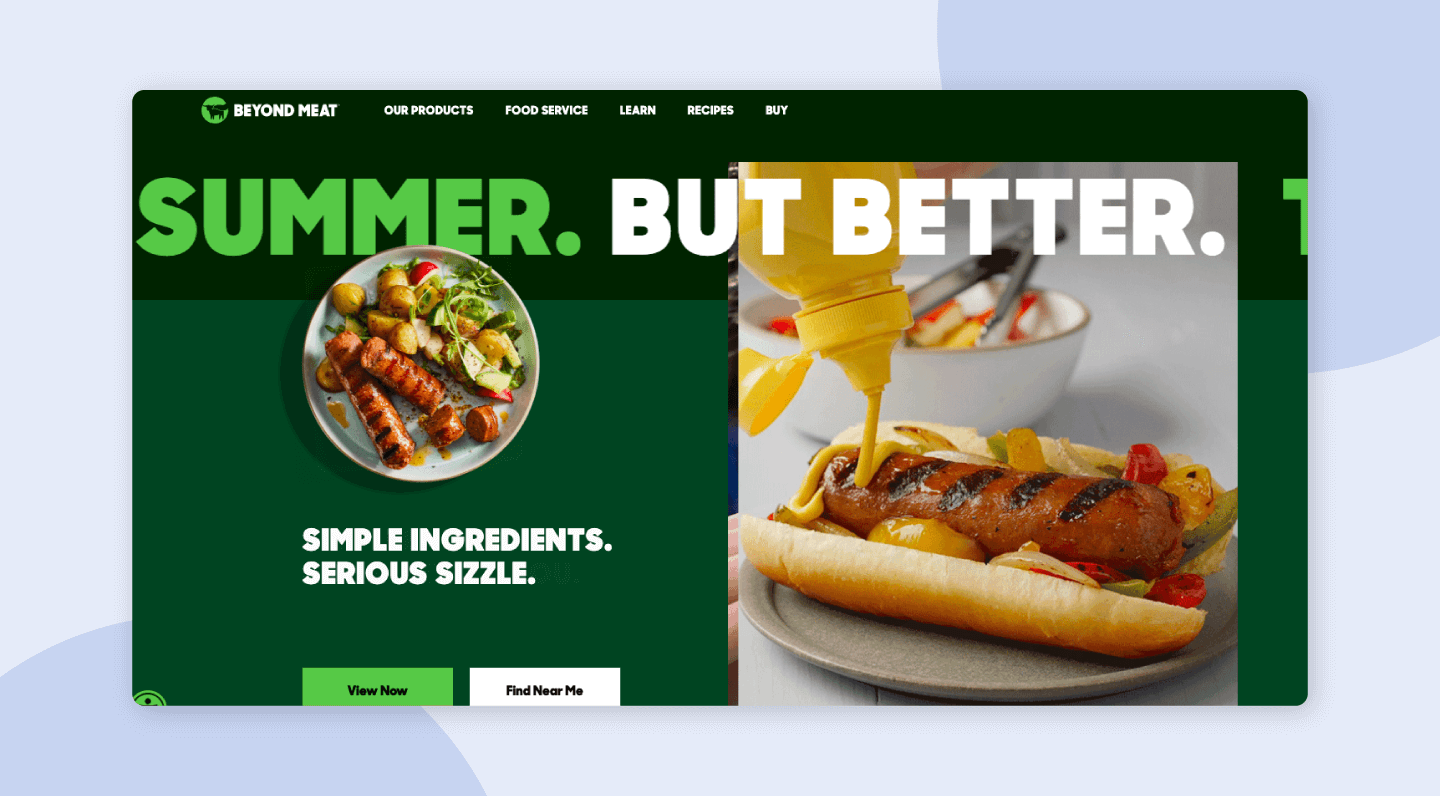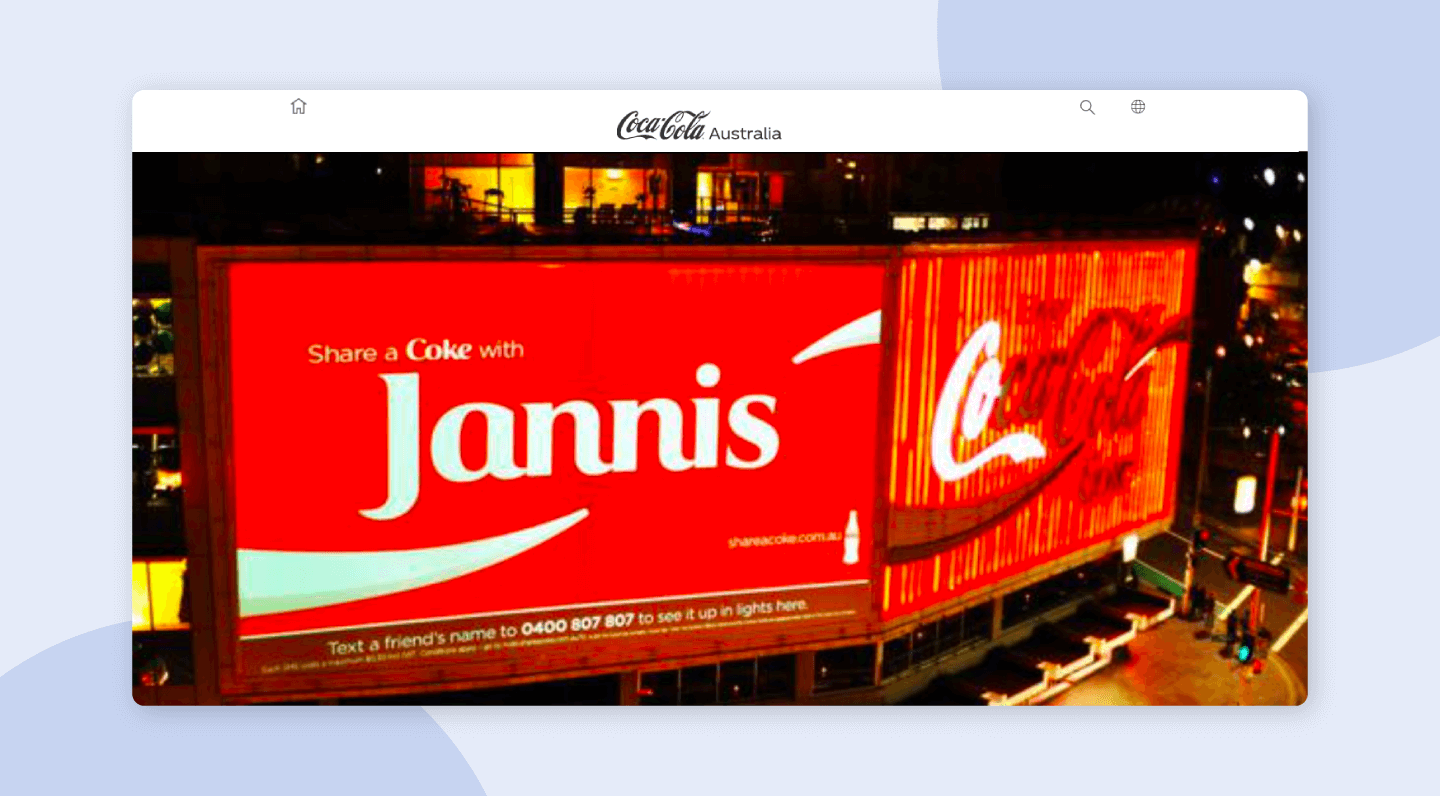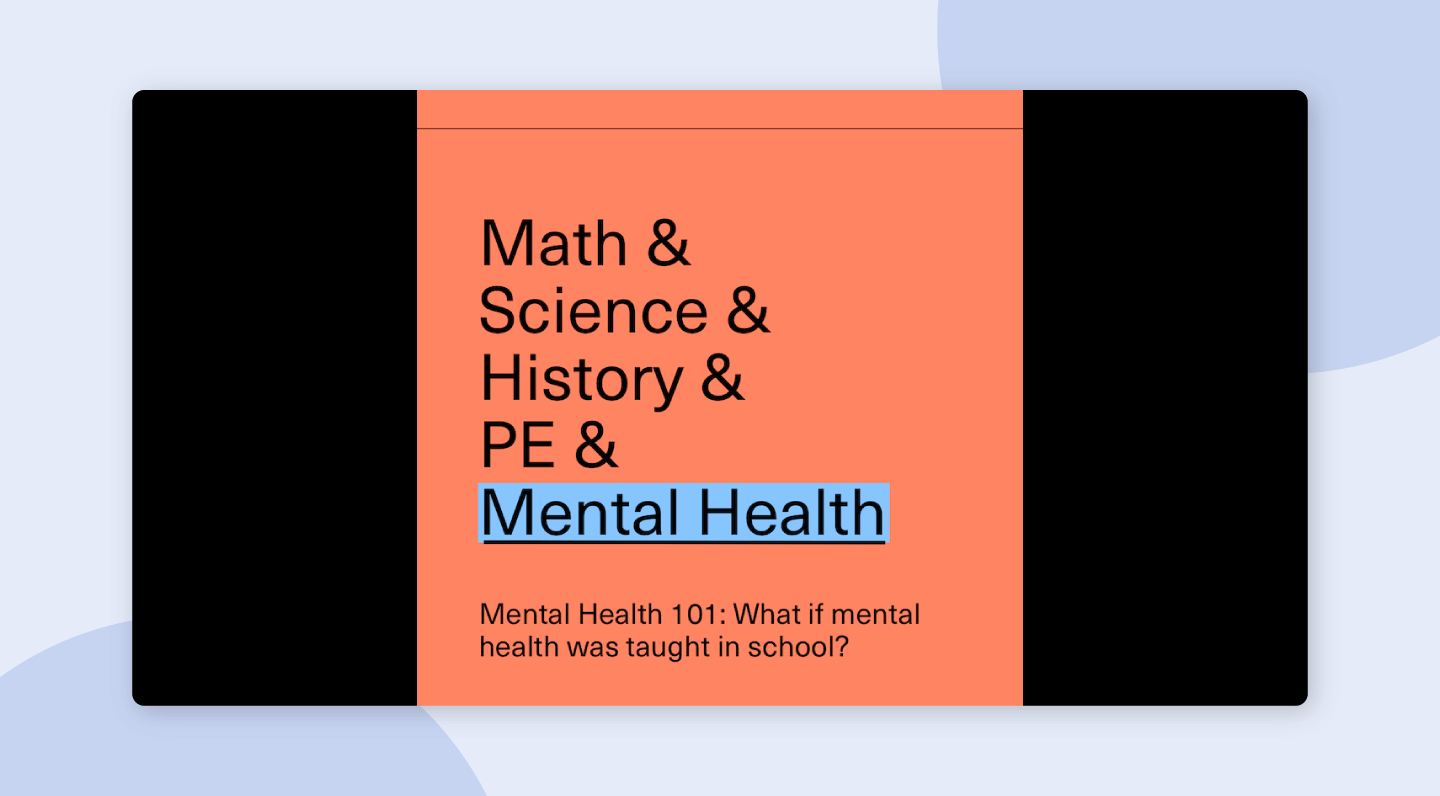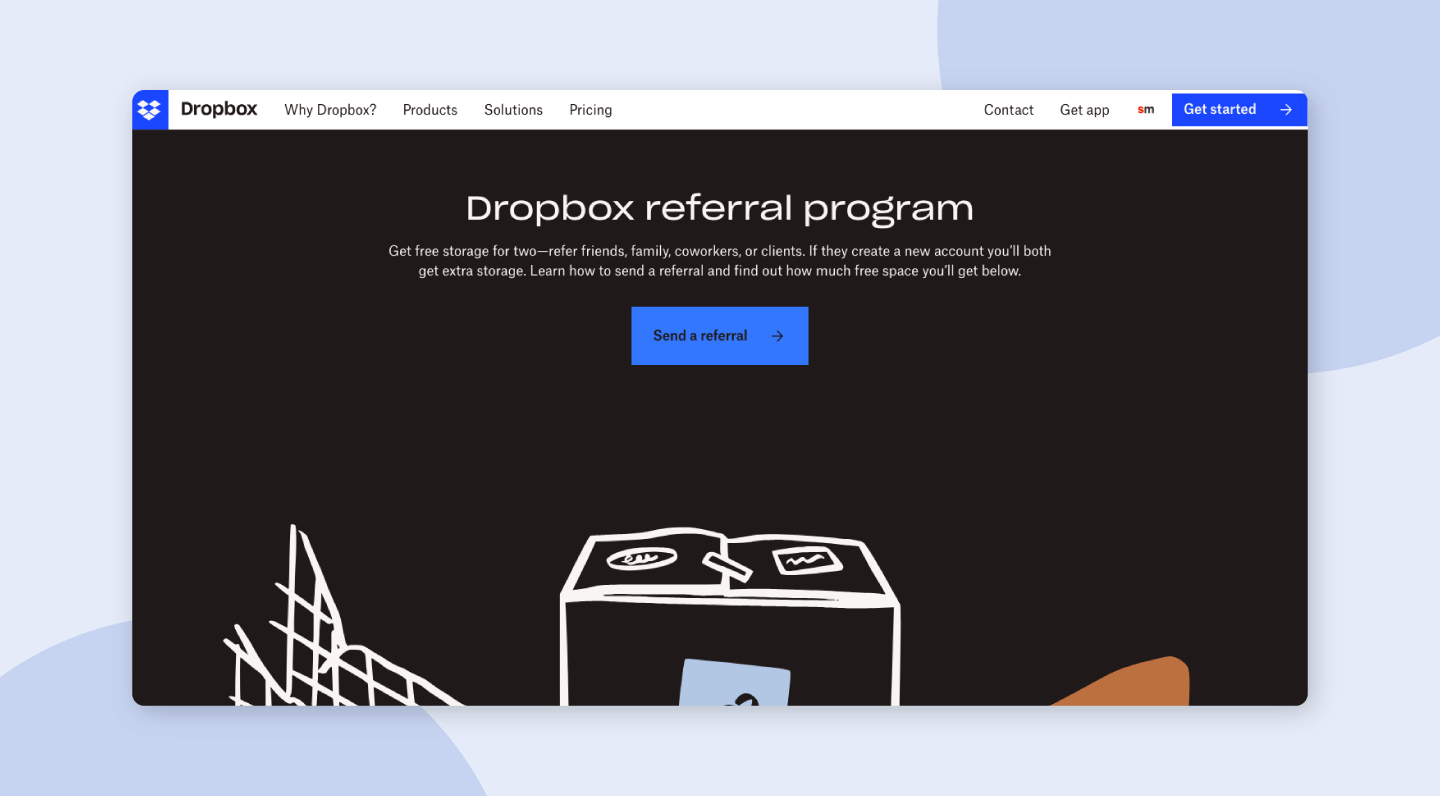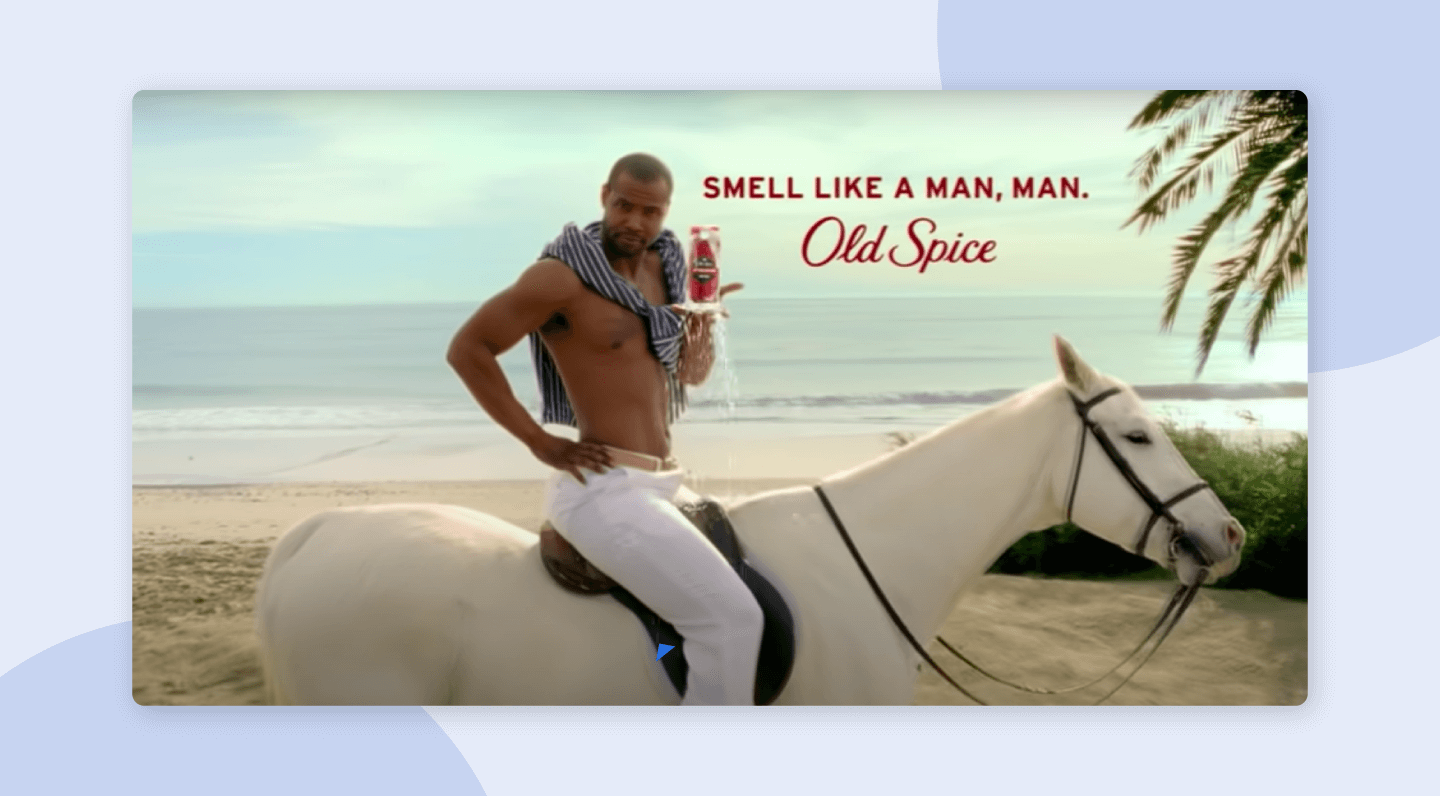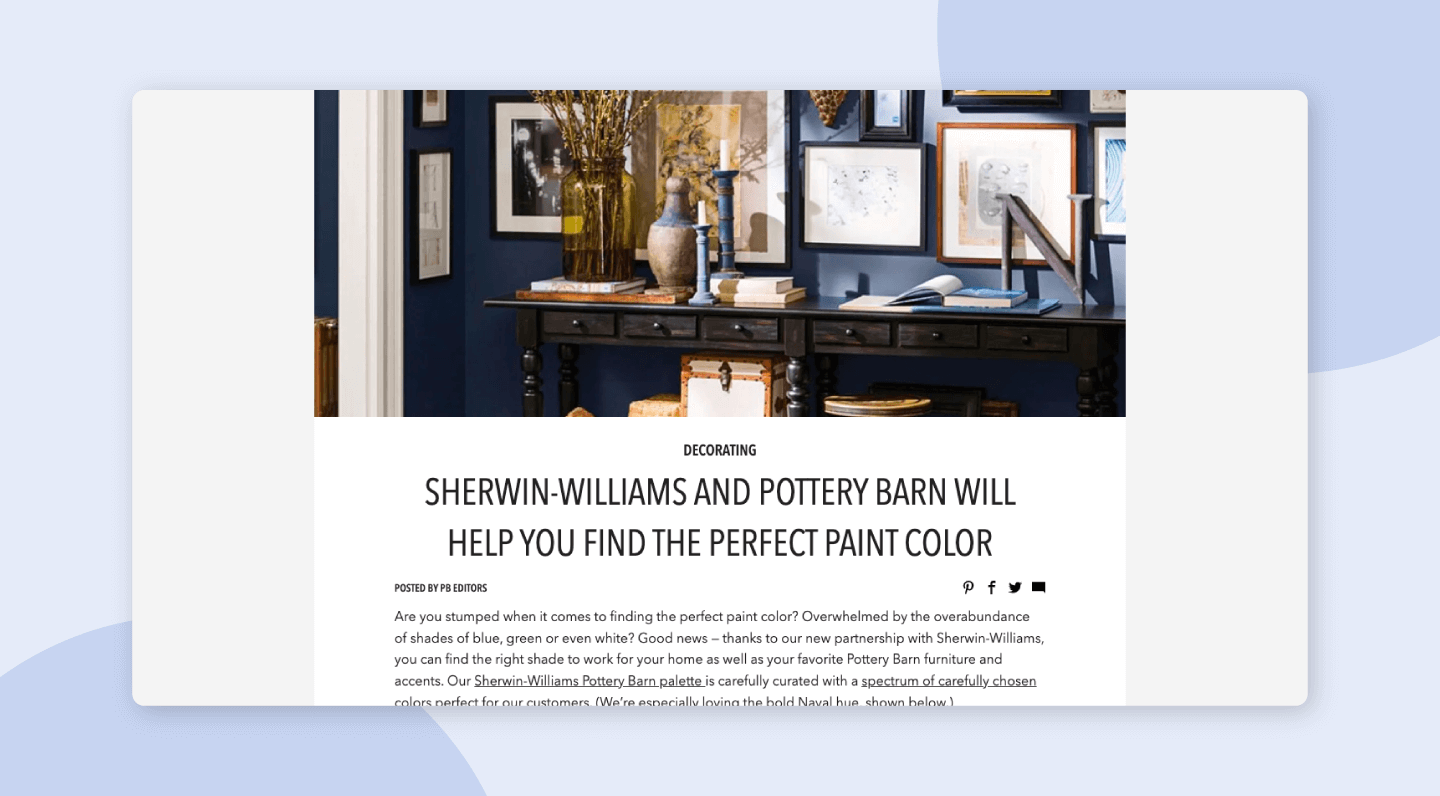What Is Brand Awareness?
Brand awareness is a potential customer’s ability to know a brand and correctly connect it to its specific product or service. A customer’s brand familiarity can be the foundation for brand trust and loyalty. Plus, brand awareness campaigns can help companies build thought leadership and brand authority.
How you choose to represent your brand can greatly influence how customers perceive your products and services. Since brand awareness can be a stepping stone toward success, your brand strategy should prioritize an authentic personality.
In the early stages of company growth, brand awareness is key. Many customers are more likely to do business with brands they know and trust — even if the products are more expensive than other options. Brand awareness may be difficult to track, but it’s still a necessary metric for many marketing campaigns.
Brand Awareness vs. Brand Recognition
Brand recognition is the first step toward brand awareness. Brand recognition refers to a customer’s ability to recognize a brand based on visual assets, including logos, colors, fonts, mascots, and more. While someone may recognize a company’s branding, they may not be able to connect the brand to its products, services, promotions, or personality.
For example, Coca-Cola is one of the most recognizable soft drink brands in the world, but it uses brand awareness campaigns to keep customers aware of its values. There’s no Pantone color for Coca-Cola red, but there doesn’t need to be — when you see it, you know exactly which brand it’s associated with. This consistent recognition allows Coca-Cola to run awareness campaigns, which help keep the brand top of mind before a customer even craves a soft drink.
Awareness and recognition work together to create successful branding campaigns. It starts with recognition, and customers' thoughts, feelings, and experiential connections often come from successful brand awareness strategies.
Why Is Brand Awareness Important?
Brand awareness is all about standing out from the crowd. Beyond simple recognition, positive brand awareness affords you various opportunities and key benefits, like:
- Trust: Awareness campaigns can foster brand authority, which encourages customers to trust a brand’s products, services, promotions, and information. Authentic brand personalities that value customer opinions and are open to feedback also encourage brand trust.
- Loyalty: After establishing trust, consumers are more willing to stay loyal and become repeat customers — as long as a brand delivers what it promised.
- Association: Positive brand awareness can lead to associations between brands and customer actions. For example, when someone needs to search the web, we often refer to that as Googling — associating Google’s brand with its service.
- Brand Equity: Positive associations, product experiences, and brand awareness can lead to positive brand equity, or a brand’s value. Customer experiences — both positive and negative — help establish and develop brand equity.
- Credibility: Where expertise and trust abound, credibility often follows. Positive brand awareness, experiences, and consistency can help establish brand authority and thought leadership.
These benefits build and support each other, but brand awareness is where it starts. Without a sturdy foundation, brands may fail to build trust, loyalty, and authority — no matter how powerful their products or services are.
How To Build Brand Awareness
You want your customers to have positive experiences with your brand well before they need or want to make a purchase, so it’s important to successfully set your brand apart without alienating your target audience.
Humanize Your Brand
Remember: The customers interested in your product or service are human beings who usually want to interact with people who share their interests and values. While a brand is not a person, it is run by unique people with their own beliefs. Instead of creating cold, product-only promotional materials, you can build brand awareness by developing a warm, inviting, people-focused personality. Humanize your efforts by helping customers associate your brand with passionate people and values they believe in, so you seem less like a company selling a product and more like a group of people providing a service.
Interact With Your Audience
Customers don’t just want answers or solutions from you — they want to interact and be acknowledged. Brand awareness relies on sociability. Use your social media accounts to post about events, ideas, and values in addition to product and service promotions, and then share, like, and comment on your audience’s brand- or industry-specific content. If you’re humanizing your brand, you need to humanize your content and interactions, too.
Be Authentic
A company’s greatest strength is often its communication. Treating customers with respect by providing honest and timely updates about products, promotions, events, services, and crises is a great way to build brand awareness and trust. Plus, authentic storytelling helps brands communicate their mission and values without overstepping boundaries or complicating content.
Don’t Overcomplicate Content
From design assets and video content to blog articles and social media posts, your content should be simple, efficient, and effective. Provide your audience with answers to important queries, make sharing easy across all platforms, and simplify complex ideas into digestible pieces. Don’t talk down to your customers, but break it down so they understand your products and services and trust your brand’s authority.
Offer Useful Products and Services
Even if you’ve humanized your brand, interacted with your audience, created an authentic voice, and simplified your content, it’s difficult to build brand awareness without useful products and services. By designing products and services that offer value to customers, you can prove that you understand the needs of your audience, are willing to provide high-quality solutions, and have created a brand dedicated to customer satisfaction rather than profit. Plus, top-tier products that are affordable or worth their value can help brands stand out in crowded industries.
Ways To Increase Brand Awareness
There isn’t a one-stop shop for brand awareness creation — companies can invest in various tools and tactics to create one-of-a-kind brand awareness campaigns.
Social Media Marketing
Employing consistent tones, messages, and design styles across social media platforms can help increase brand awareness. With just over 4.8 billion social media users worldwide, it’s a safe bet to assume most of your target audience exists on social media. By distributing content across these platforms, brands can engage with customers, provide answers to questions, define their online personality, and stay aware of industry trends.
Email Marketing
Whether investing in cold emailing techniques or nurturing warm leads, email marketing campaigns can successfully increase brand awareness. Informational emails help brands build authority and trust, promotional emails keep products and services top of mind, and email drip campaigns automatically allow for branding opportunities targeted at potential customers.
Content Marketing
Content marketing is more than creating valuable content with consistent distribution; it requires you to tell your brand’s story to your audience. An authentic, well-told story can capture the attention of almost anyone — even people who have never heard of your brand or don’t know much about your industry. By investing in all forms of media, including social media posts, blog articles, videos, infographics, and more, you can use content marketing to raise awareness about your brand, build associations, and establish authority.
Collaboration Marketing
Every brand has an industry niche they want to reach. By partnering with other companies or influencers, brands can build additional awareness in new target audiences already interested in their brand partner. This can open up new opportunities for additional collaborations and possible investments in influencer marketing.
Video Marketing
Video marketing is becoming one of the most important parts of a brand’s marketing campaigns. From building customer awareness to encouraging product purchases, videos can cut through the noise created by content marketing. Plus, videos are great at eliciting emotions, especially positive feelings associated with love, success, wealth, productivity, and more. Videos can make an impact anywhere, including social media platforms, resource centers, blog pages, and search engine results pages (SERPs).
Earned Media
One of the most valuable brand awareness campaign tactics is one you don’t pay for or create. Earned media refers to any recognition or marketing materials made about your brand by third parties. Word-of-mouth marketing between existing and potential customers is invaluable, and other free publicity like customers’ positive reviews, advertisements, social media posts, and more can expand a brand’s reach to new markets.
Search Engine Optimization
Investing in search engine optimization is an almost foolproof way to increase brand awareness. Thorough keyword research and user experience optimization can help brands land on page one of the SERPs. Brands can also capture the attention of target audience members by answering user questions, providing in-depth informational guides, and analyzing and compiling well-conducted research into simple studies or statistics articles.
Brand Awareness Campaign Tactics
There are plenty of strategy options you can use to increase the success of your company’s brand awareness campaigns, regardless of which channels, platforms, or tools you choose. Brands can even combine individual tactics into more complex brand awareness campaigns.
- Co-branding: Partnering with like-minded organizations can help brands reach new audiences in different industries. Co-branding can lead to cross-promotion, sponsorships, collaborative content, and joint campaigns, all of which can increase brand awareness.
- Guest Blogging: Writing blogs for other businesses in a specific industry can help attract audiences who want authoritative content from niche, trustworthy brands. This tactic can also help brands build backlinks and relationships with other brands.
- Podcasting: Whether you’re recording an episode alone, with a co-host, or as a guest, podcasts are a great way to increase brand awareness and thought leadership within your industry. Plus, brands can create audio ads or sponsor shows on different platforms.
- Videos: Videos can help brands grow awareness in fun and interactive ways. Product and service, informational, value-based, and how-to content can all provide some sort of value to viewers. Plus, videos are easily shareable on various media platforms.
- Paid Ads: While free publicity is great, it’s also possible to build brand awareness through paid ads. Consider investing in search, video, and audio advertising, or use pay-per-click advertising to enhance the success of your brand awareness campaign.
- Native Ads: Sponsored articles or content and in-feed ads are designed to blend into the platform they’re displayed on. As a less intrusive advertising option, native ads can promote visibility and conversions without impacting a site’s look, feel, or experience.
- Sponsorships: Has your brand considered sponsoring an event? Whether it’s a concert, fun run, fair, or other local or national event, sponsorships allow brands to promote themselves to larger audiences. Plus, brands can sponsor events that promote the same values and beliefs associated with their own brand personality.
- Referrals: Satisfied customers or other brands may agree to refer your services to potential customers. For this strategy to be successful, you may need to offer referral incentives, like discounts, premium offers or promotions, or free products.
- Freebies: It’s difficult to turn down anything free, especially a free product or service that answers a question or solves a customer’s pain point. Plus, free trials and freemium offers are useful tactics for growing brand awareness among new and returning customers.
- Hashtags: Branded and unbranded hashtags can promote unique campaigns, events, giveaways, competitions, taglines, and more. These hashtags can be used by both the brand and its followers, creating large communities connected through a simple social media tactic.
How To Measure Brand Awareness
Brand awareness is a vague metric that can be difficult to track and measure. However, there are quantitative and qualitative measurements marketers can use to analyze the success of their brand awareness campaigns.
Quantitative Measurements
Quantitative measurements record specific customer actions, which can be used to compare past achievements and create new objectives. These metrics include:
- Direct Traffic: Based on the number of people searching for and visiting your website, your direct traffic metric can help marketers measure how successful a campaign is at keeping a brand top of mind. If a brand awareness campaign is successful, marketers should also notice lower bounce rates and increased session durations compared to pre-campaign time periods.
- Site Traffic: Site traffic numbers can identify the number of users visiting your site. This metric doesn’t specify where your visitors originated from, but increased numbers can be a measure of a campaign’s success. This metric considers both organic and paid traffic numbers from all tactics, including paid and native ads, referrals, sponsorships, co-branding, and more.
- Social Media Engagement: The number of likes, comments, shares, retweets, reposts, and followers gained by a brand’s social media accounts indicate how customer interactions are changing, and whether awareness is growing. Powerful brand awareness campaigns should include social media strategies and tactics, including unique content types, attractive images or videos, and engaging comments or captions like questions, polls, and more.
Qualitative Measurements
While less exact than quantitative measurements, qualitative measurements track more abstract actions, which can analyze consumer opinions and adjust awareness campaigns:
- News Alerts: Whether you’re simply checking for your brand in search engine results or receiving alerts from local and national news articles, news alerts can show marketers how their campaigns have brought brand awareness to specific audiences. Additionally, brands can use news alerts to monitor competitor and industry trends and quickly respond to changes, which can help stabilize brand authority and cement brands as thought leaders — keeping them top of mind no matter the industry landscape.
- Social Listening: Rather than monitoring specific social media engagement, social listening tracks organic brand mentions, hashtags, and brand-related posts. Brand tracking tools can help marketers stay up-to-date on brand mentions, which means they can quickly engage with past, present, and future customers on earned platforms as well as owned media sites. Plus, this metric can help brands understand what platforms their prospective customers are engaging with, which can help strengthen cross-channel campaign strategies as well.
- Surveys: When done correctly, brands can survey loyal customers, casual users, and newcomers alike to learn where they heard about a brand or product, what features impacted their purchasing decision, and the brand associations consumers may hold. Brand awareness and perception surveys can also help marketers understand how their campaigns impact customers, hear truthful ideas about their brand, and make customer-requested changes or enhancements.
8 Brand Awareness Campaign Examples
Despite their vague nature, brand awareness campaigns are popular — especially for brands with big competitors. Take a look at some of the best examples of brand awareness campaigns before jumping into your own.
1. Spotify
Music is often referred to as a universal language. With this concept in mind, Spotify’s brand awareness campaigns prioritized accessibility. By creating a cross-platform application, Spotify identified a customer need and provided a useful solution. The brand also works to provide one-of-a-kind music experiences to both new and existing users, which helps communicate its values and commitment to its audience.
- Why It Worked: Prioritizing accessibility and availability allowed Spotify to reach its target audience, enhance brand awareness, and increase brand trust quickly. Now the brand’s universal streaming abilities allow Spotify to personalize each customer’s listening experience.
2. Mountain Dew
In 2021, Mountain Dew created a Super Bowl contest designed to promote its newest product among various audiences. Through a combination of social media content and video advertisements attached to the Mountain Dew name, the brand was able to engage with new customers and promote its values and personality.
- Why It Worked: Using social media marketing and engagement strategies, Mountain Dew interacted with new and existing customers to promote a specific product under its brand. This led to an increase in the brand’s social media followers, allowing Mountain Dew to create targeted content designed to engage with its new followers.
3. Beyond Meat
As one of the most-searched vegan products on the planet, Beyond Meat’s brand awareness campaigns have seen major success. Careful wording and authentic messaging about the product’s ingredients, uses, and purpose has helped cement Beyond Meat as a top meat replacement for vegan and non-vegan folks alike. Plus, strategic grocery store placement allowed the brand to increase product awareness without inciting misconceptions.
- Why It Worked: A combination of strategies — including influencer marketing — allowed Beyond Meat to reach beyond the vegan industry. Its product can be used and loved by various audiences while still staying true to its ingredients and creation process.
4. Coca-Cola
Most brand awareness campaigns center potential customers as the target audience, but Coca-Cola’s “Share A Coke” campaign stretched beyond this common goal. This awareness campaign was designed to reach buyers who would share the drink with friends, family, colleagues, and acquaintances. From common names to specific phrases, Coca-Cola’s brand awareness campaign stretched beyond its everyday users.
- Why It Worked: Personalization can be the great equalizer. Coca-Cola’s “Share A Coke” campaign used personalization to communicate its customer-centric intentions and helped the brand reach larger audiences — namely, those who bought the product to share rather than consume it themselves.
5. Rare Beauty
Rare Beauty’s Mental Health 101 initiative wasn’t developed as a brand awareness tactic — it’s simply part of Rare Beauty’s values and beliefs. The company developed a social media project designed to be shared with Rare Beauty customers and non-customers alike. The resource was easily shareable and simple to understand, but still positioned the brand as an authority within the sphere.
- Why It Worked: Rare Beauty stayed true to its core values by developing an authentic social media campaign. The brand recognized a consumer need and created a simple and useful solution, which the brand posted to its owned accounts and then shared across various owned and earned platforms.
6. Dropbox
If your brand awareness and conversions within your target market are holding steady, your brand may need to increase its reach. For example, Dropbox introduced a referral program to incentivize customers to promote its product. By producing a useful product and providing additional value to new and returning customers, Dropbox can expand brand awareness to new markets.
- Why It Worked: Dropbox’s referral program allowed customers to positively promote the product and its services in exchange for storage incentives. This enabled — and still enables — the brand to receive positive promotions and feedback, gain earned media, and increase brand awareness across new audiences.
7. Old Spice
One of the most successful ad campaigns of all time was Old Spice’s “Smell like a man, man” campaign because it quickly showed the brand’s comedic personality. After the initial campaign ran, the brand continued to interact with customers by responding to comments with characterized videos and replies. Its simple content took the world by storm, and the Old Spice brand skyrocketed to the top of the charts — and our minds.
- Why It Worked: Instead of shying away from its fun personality, Old Spice put it on display. By being authentic, the brand truthfully displayed its values to potential customers. Additionally, its quick and witty engagement increased brand awareness across multiple platforms.
8. Pottery Barn
Pottery Barn and Sherwin-Williams’s partnership is a perfect example of a brand awareness campaign using a co-branding strategy. The two brands created a Sherwin-Williams Pottery Barn palette designed to help customers select matching paint colors and furniture to create a cozy living space. In a complementary partnership like this, both brands benefit from all types of customer interactions.
- Why It Worked: By investing in collaborative marketing and co-branding, Pottery Barn’s brand reached an entirely new target audience. Both brands involved in the partnership could benefit from the other’s exposure and referrals without competing for industry space.
Elevate Your Brand’s Visibility with Smartsheet
Empower your people to go above and beyond with a flexible platform designed to match the needs of your team — and adapt as those needs change.
The Smartsheet platform makes it easy to plan, capture, manage, and report on work from anywhere, helping your team be more effective and get more done. Report on key metrics and get real-time visibility into work as it happens with roll-up reports, dashboards, and automated workflows built to keep your team connected and informed.
When teams have clarity into the work getting done, there’s no telling how much more they can accomplish in the same amount of time. Try Smartsheet for free, today.
